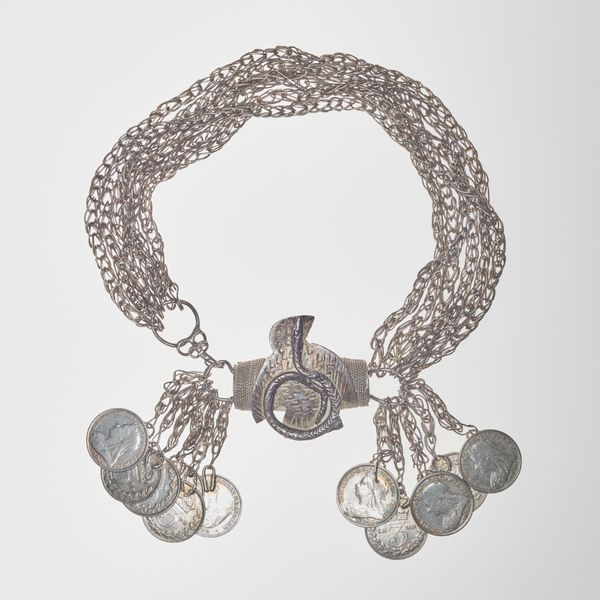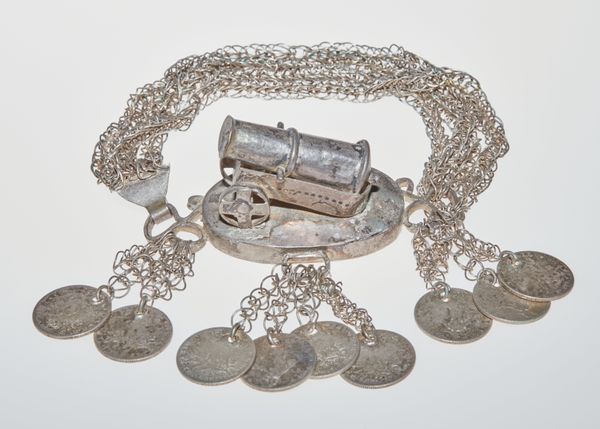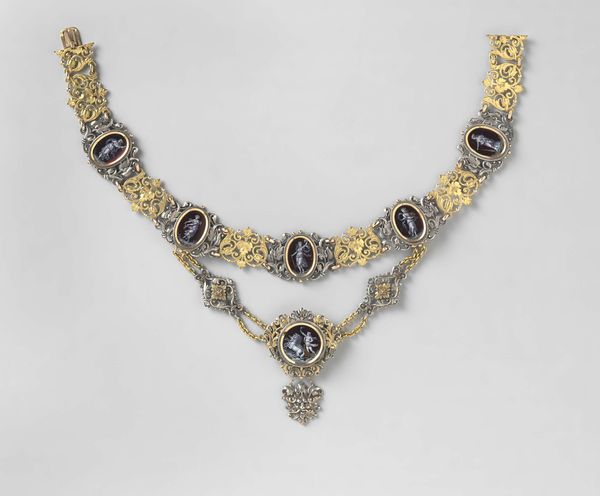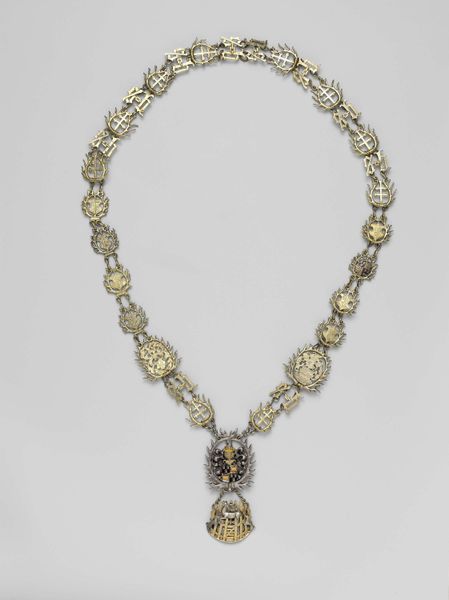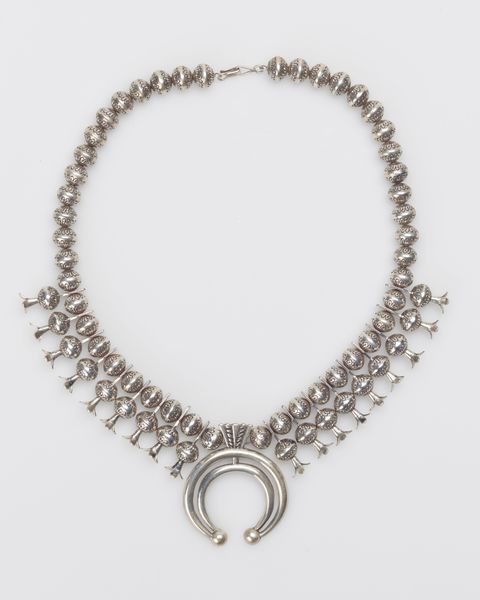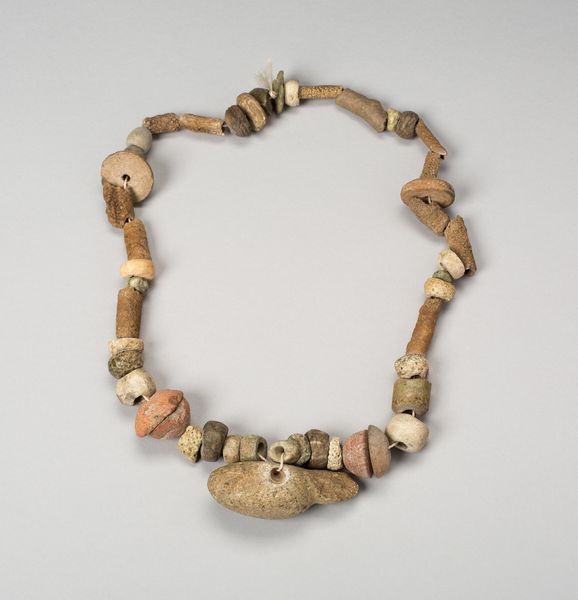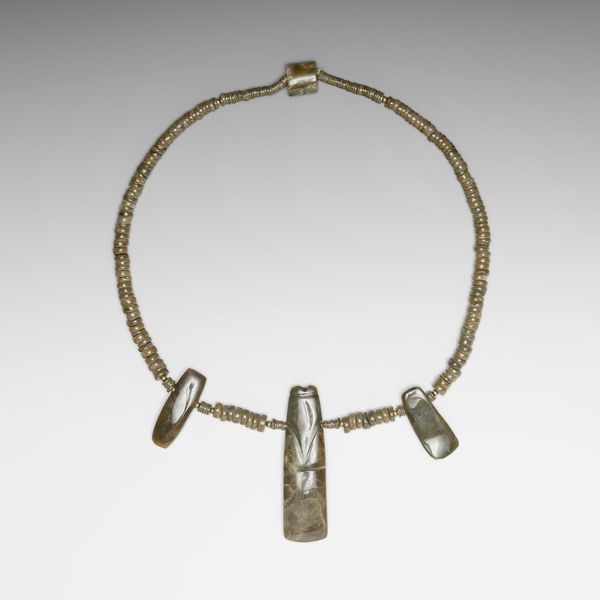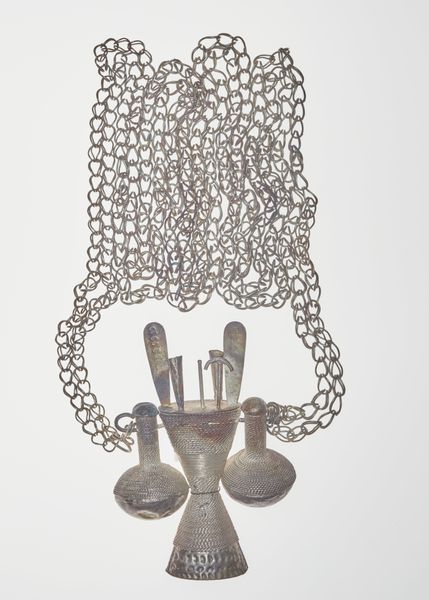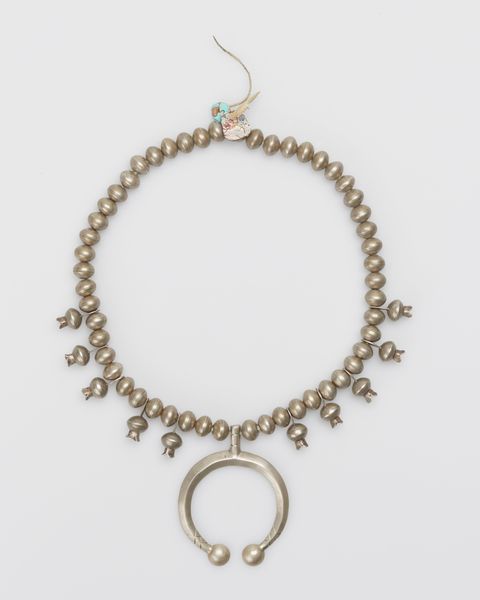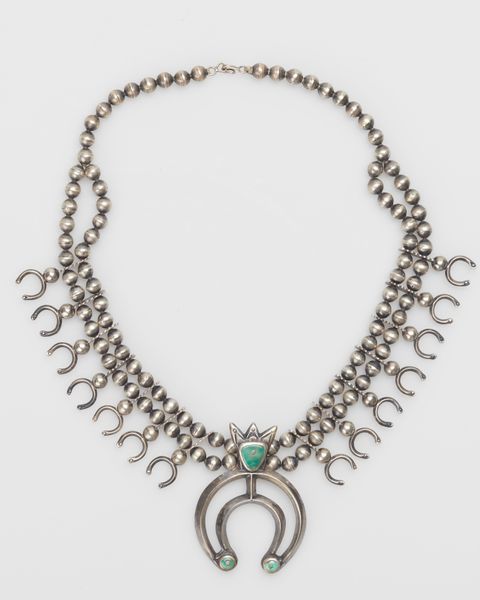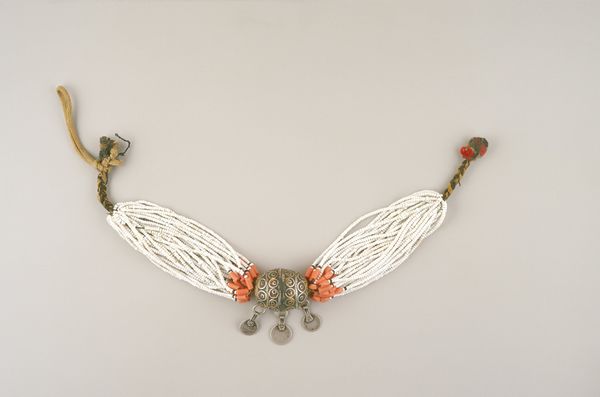
Bracelet with cannon and umbrella ornaments and coin pendants c. late 19th century
0:00
0:00
silver, assemblage, metal, relief, sculpture
#
african-art
#
silver
#
assemblage
#
metal
#
sculpture
#
relief
#
sculpture
Dimensions: 1 1/4 × 2 3/4 × 2 3/4 in. (3.18 × 6.99 × 6.99 cm) (ornament only)
Copyright: Public Domain
Curator: This is a silver bracelet crafted by a Fon artist around the late 19th century. It features a complex assemblage of forms, including miniature cannons, an umbrella, and coin pendants. Editor: It strikes me as a potent emblem. There's a certain tension here. Luxurious silver is repurposed to depict objects associated with power, resistance and commerce during a turbulent colonial era. Curator: Precisely. Consider the cannon: It is a widespread symbol of Dahomey's military prowess and its struggle against European incursion. And it is set alongside an umbrella, which has long represented the king's authority and protection. Editor: Then the coins signify the intrusion of foreign economies but also reflect Dahomey’s role within it, and the active pursuit of wealth by its people. So this bracelet is far more than mere ornamentation. Curator: Absolutely. Wearing such a bracelet was likely a calculated decision. The Fon people carefully constructed these bracelets, not just as personal adornment, but as wearable declarations laden with social, spiritual and historical meaning. Editor: It prompts an important question: what is luxury when its symbolic meaning hinges on resistance? Does the wealth negate or amplify the call for emancipation and remembrance? Curator: Think of these objects as charged signs. The cannon, a harbinger of destruction, transformed into a sign of power and perhaps protection when cast in silver and integrated in jewelry. Even more layered because Dahomey artists produced objects both for their patrons, who used and controlled such armaments, and also for themselves as signifiers of an equal, if not more powerful, army. Editor: That complicates everything! It exposes how these seemingly simple adornments functioned as tools within unequal power dynamics that shaped Fon identity and resistance. A beautiful and deceptively intricate history lesson to carry with you. Curator: A very powerful idea indeed, revealing an intricate narrative embedded within these material symbols. Editor: The bracelet holds a remarkable convergence of wealth, conflict, power, and tradition, inviting us to think about the complex dialogues between identity, agency and remembrance.
Comments
minneapolisinstituteofart about 2 years ago
⋮
More than one hundred years ago, the elite of the Danhomé Kingdom in West Africa would have worn these silver ornaments to adorn themselves and show off their wealth, and also to protect themselves from harm and evil. Fashioned by jewelers from imported silver coins, the ornaments were embellished with tiny sculptures that refer to past kings, heroic wars, and the Vodun religion. The coins attached to the ornaments date from between 1873 and 1910, bridging the last decades of the independent Kingdom and the first 15 years of French colonial rule.
Join the conversation
Join millions of artists and users on Artera today and experience the ultimate creative platform.
